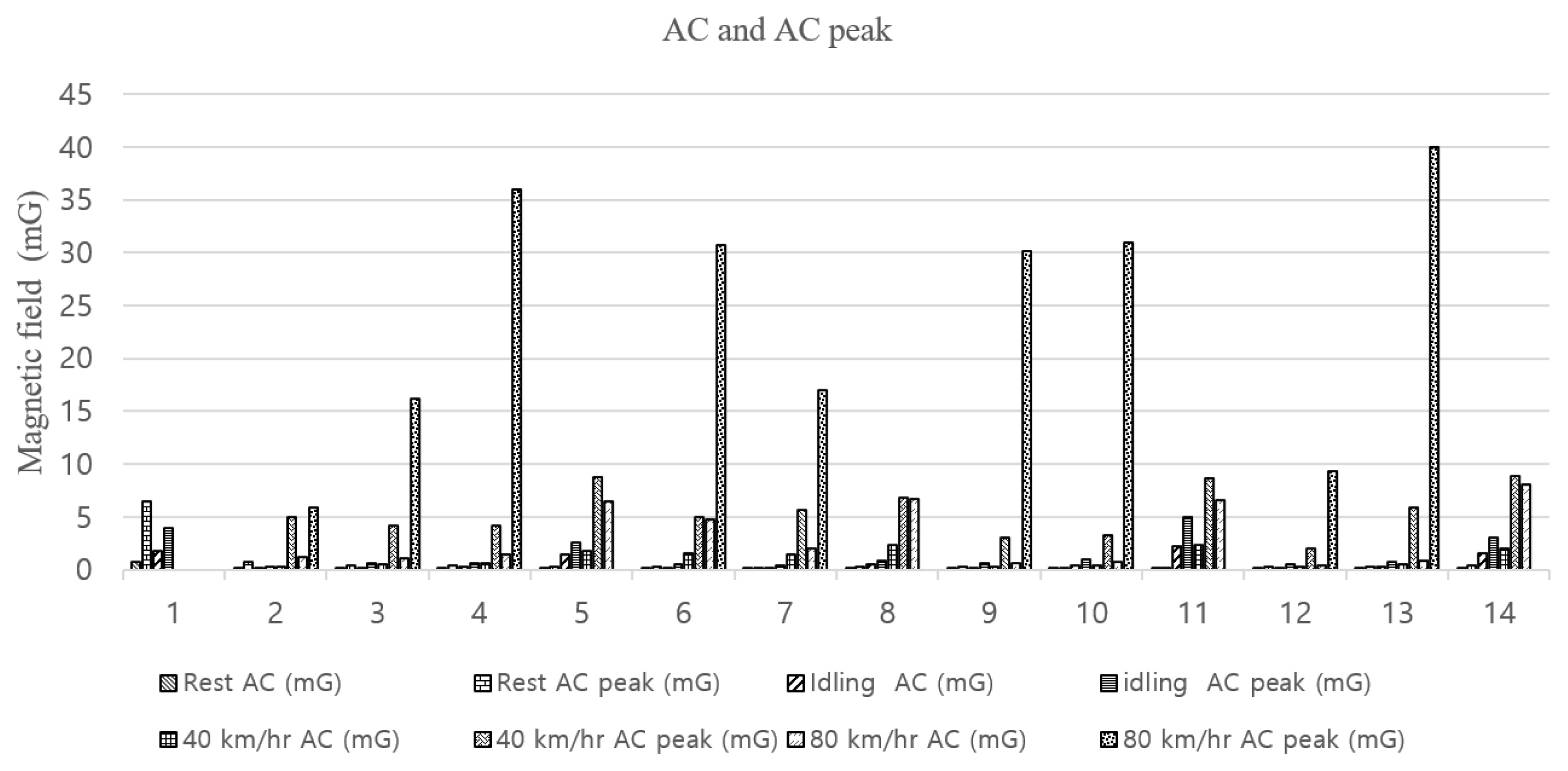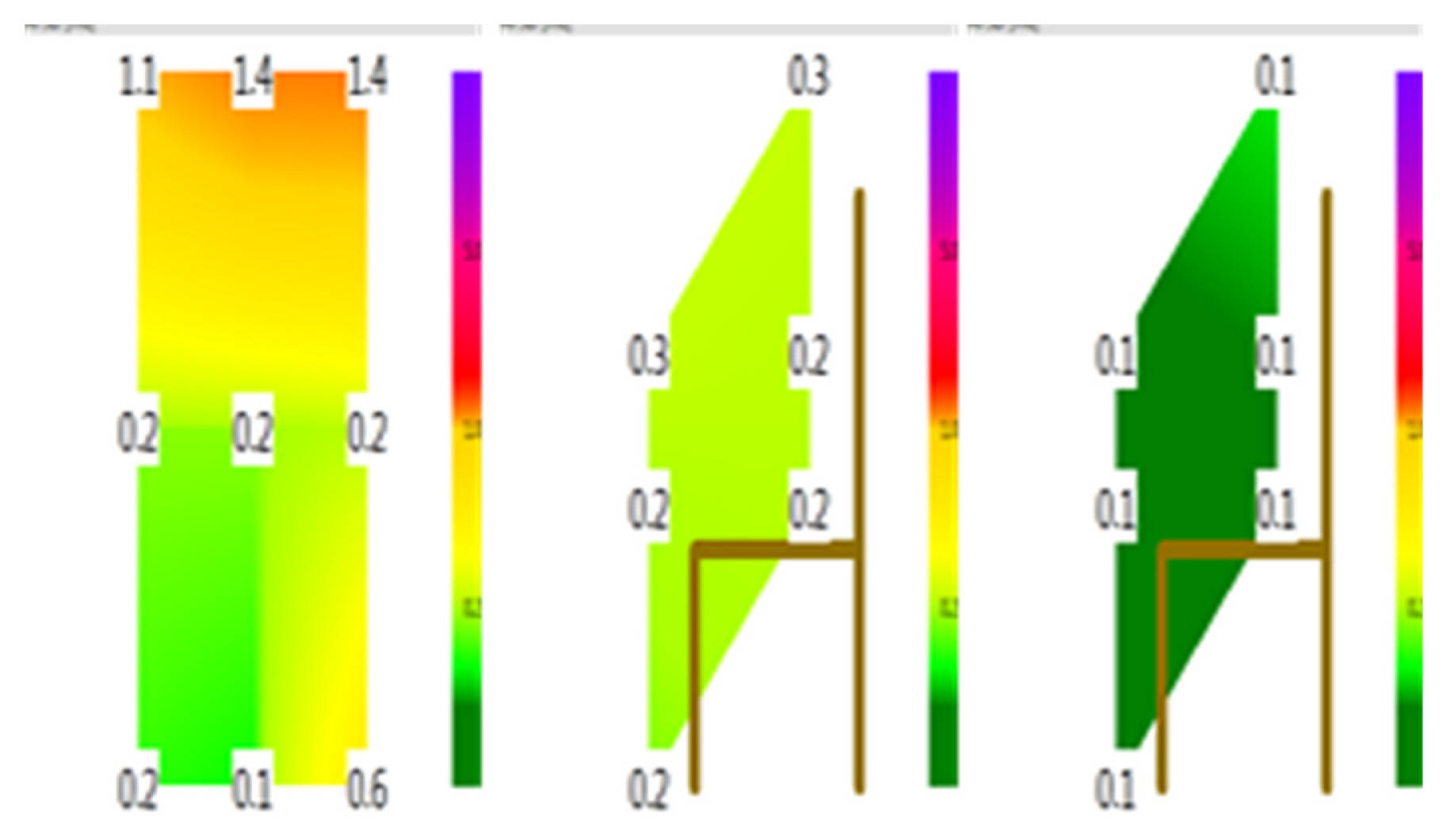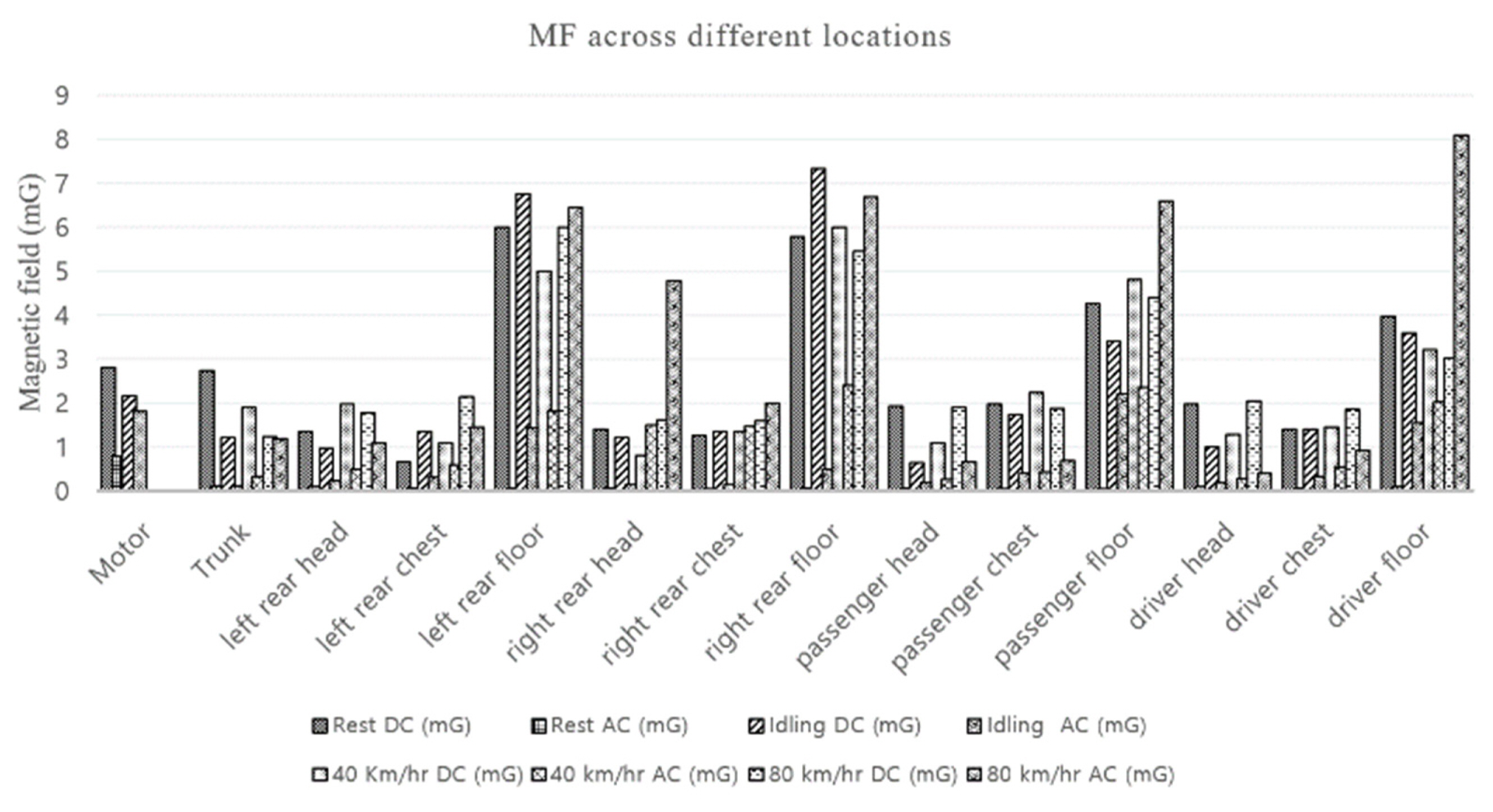1. NG Ptitsyna, A Ponzetto, YA Kopytenko, VS Ismagilov, and AG Korobeinikov, "Electric vehicle magnetic fields and their biological relevance,"
Journal of Scientific Research and Reports, vol. 3, pp. 1753ŌĆō1770, 2014.

3. N Irvine, Definition, epidemiology and management of electrical sensitivity. Health Protection Agency, Oxfordshire, UK: Report No HPA-RPD-010, 2005.
4. GJ Rubin, JD Munshi, and S Wessely, "Electromagnetic hypersensitivity: a systematic review of provocation studies,"
Psychosomatic Medicine, vol. 67, no. 2, pp. 224ŌĆō232, 2005.


5. JY Yong, VK Ramachandaramurthy, KM Tan, and N Mithulananthan, "A review on the state-of-the-art technologies of electric vehicle, its impacts and prospects,"
Renewable and Sustainable Energy Reviews, vol. 49, pp. 365ŌĆō385, 2015.

6. F Un-Noor, S Padmanaban, L Mihet-Popa, MN Mollah, and E Hossain, "A comprehensive study of key electric vehicle (EV) components, technologies, challenges, impacts, and future direction of development,"
Energies, vol. 10, no. 8, article no 1217, 2017.
https://doi.org/10.3390/en10081217

7. M Wolsink, "The research agenda on social acceptance of distributed generation in smart grids: renewable as common pool resources,"
Renewable and Sustainable Energy Reviews, vol. 16, no. 1, pp. 822ŌĆō835, 2012.

9. International Commission on Non-Ionizing Radiation Protection. "Guidelines for limiting exposure to time-varying electric, magnetic, and electromagnetic fields (up to 300 GHz),"
Health Physics, vol. 74, no. 4, pp. 494ŌĆō522, 1998.

10. International Commission on Non-Ionizing Radiation Protection. "Guidelines for limiting exposure to time-varying electric and magnetic fields (1 Hz to 100 kHz),"
Health Physics, vol. 99, no. 6, pp. 818ŌĆō836, 2010.


11. JC Lin, "A new IEEE standard for safety levels with respect to human exposure to radio-frequency radiation,"
IEEE Antennas and Propagation Magazine, vol. 48, no. 1, pp. 157ŌĆō159, 2006.

12. A Fragopoulou, Y Grigoriev, O Johansson, LH Margaritis, L Morgan, E Richter, and C Sage, "Scientific panel on electromagnetic field health risks: consensus points, recommendations, and rationales,"
Reviews on Environmental Health, vol. 25, no. 4, pp. 307ŌĆō317, 2010.

13. G Hyland, The Physiological and Environmental Effects on Non-ionising Electromagnetic Radiation. Luxembourg: European Parliament, Directorate General for Research, 2001.
15. AVAATE.
Guideline of the Austrian Medical Association for the diagnosis and treatment of EMF-related health problems and illnesses (EMF syndrome): consensus paper of the Austrian Medical AssociationŌĆÖs EMF Working Group (AG-EMF), 2012. Available:
https://avaate.org/spip.php?article2279
16. SJ Starkey, "Inaccurate official assessment of radiofrequency safety by the Advisory Group on Non-ionising Radiation,"
Reviews on Environmental Health, vol. 31, no. 4, pp. 493ŌĆō503, 2016.


17. BioInitiative.
BioInitiative 2012 a rationale for biologically-based exposure standards for low-intensity electromagnetic radiation, 2012. Available:
https://bioinitiative.org/conclusions/
18. J Podd, J Abbott, N Kazantzis, and A Rowland, "Brief exposure to a 50 Hz, 100 ╬╝T magnetic field: effects on reaction time, accuracy, and recognition memory,"
Bioelectromagnetics, vol. 23, no. 3, pp. 189ŌĆō195, 2002.


19. CL Mitchell, DI McRee, NJ Peterson, and HA Tilson, "Some behavioral effects of short-term exposure of rats to 2.45 GHz microwave radiation,"
Bioelectromagnetics, vol. 9, no. 3, pp. 259ŌĆō268, 1988.


20. N Leitgeb and J Schrottner, "Electrosensibility and electromagnetic hypersensitivity,"
Bioelectromagnetics, vol. 24, no. 6, pp. 387ŌĆō394, 2003.


21. M Crasson, JJ Legros, P Scarpa, and W Legros, "50 Hz magnetic field exposure influence on human performance and psychophysiological parameters: Two double-blind experimental studies,"
Bioelectromagnetics, vol. 20, no. 8, pp. 474ŌĆō486, 1999.


22. A Barth, I Ponocny, E Ponocny-Seliger, N Vana, and R Winker, "Effects of extremely low-frequency magnetic field exposure on cognitive functions: results of a metaanalysis,"
Bioelectromagnetics, vol. 31, no. 3, pp. 173ŌĆō179, 2010.


23. JP Reilly, "Maximum pulsed electromagnetic field limits based on peripheral nerve stimulation: application to IEEE/ANSI C95. 1 electromagnetic field standards,"
IEEE Transactions on Biomedical Engineering, vol. 45, no. 1, pp. 137ŌĆō141, 1998.


24. RA Tell, G Sias, J Smith, J Sahl, and R Kavet, "ELF magnetic fields in electric and gasoline-powered vehicles,"
Bioelectromagnetics, vol. 34, no. 2, pp. 156ŌĆō161, 2013.


25. R Hareuveny, M Sudan, MN Halgamuge, Y Yaffe, Y Tzabari, D Namir, and L Kheifets, "Characterization of extremely low frequency magnetic fields from diesel, gasoline and hybrid cars under controlled conditions,"
International Journal of Environmental Research and Public Health, vol. 12, no. 2, pp. 1651ŌĆō1666, 2015.



26. MN Halgamuge, CD Abeyrathne, and P Mendis, "Measurement and analysis of electromagnetic fields from trams, trains and hybrid cars,"
Radiation Protection Dosimetry, vol. 141, no. 3, pp. 255ŌĆō268, 2010.


27. A Vassilev, A Ferber, C Wehrmann, O Pinaud, M Schilling, and AR Ruddle, "Magnetic field exposure assessment in electric vehicles,"
IEEE Transactions on Electromagnetic Compatibility, vol. 57, no. 1, pp. 35ŌĆō43, 2015.

28. K Vedholm and YK Hamnerius, "Personal exposure resulting from low level low frequency electromagnetic fields in automobiles," In: Proceedings of the 2nd World Congress for Electricity and Magnetism in Medicine and Biology; Bologna, Italy. 1997, pp 8ŌĆō13.
29. S Stankowski, A Kessi, O Becheiraz, K Meier-Engel, and M Meier, "Low frequency magnetic fields induced by car tire magnetization,"
Health Physics, vol. 90, no. 2, pp. 148ŌĆō153, 2006.


30. P Moreno-Torres, M Lafoz, M Blanco, and JR Arribas, "Passenger exposure to magnetic fields in electric vehicles," In:
Modeling and Simulation for Electric Vehicle Applications; Rijeka, Croatia: InTech. 2016, pp 47ŌĆō71.

31. PC Moreno-Torres, J Lourd, M Lafoz, and JR Arribas, "Evaluation of the magnetic field generated by the inverter of an electric vehicle,"
IEEE Transactions on Magnetics, vol. 49, no. 2, pp. 837ŌĆō844, 2013.

32. T Campi, S Cruciani, V De Santis, F Maradei, and M Feliziani, "Numerical characterization of the magnetic field in electric vehicles equipped with a WPT system,"
Wireless Power Transfer, vol. 4, no. 2, pp. 78ŌĆō87, 2017.

33. C Lennerz, M OŌĆÖConnor, L Horlbeck, J Michel, S Weigand, C Grebmer et al., "Electric cars and electromagnetic interference with cardiac implantable electronic devices: a cross-sectional evaluation,"
Annals of Internal Medicine, vol. 169, no. 5, pp. 350ŌĆō352, 2018.


34. AR Ruddle, R Armstrong, L Dawson, and A Rowell, "Investigation of human exposure to magnetic fields from electrical powertrains: measured exposure levels and simulated impact on human body," In:
Proceedings of the 5th IET Hybrid and Electric Vehicles Conference (HEVC); London, UK. 2014.

35. S Milham, JB Hatfield, and R Tell, "Magnetic fields from steel-belted radial tires: implications for epidemiologic studies,"
Bioelectromagnetics, vol. 20, no. 7, pp. 440ŌĆō445, 1999.


37. AM Muc, Electromagnetic Fields Associated with Transportation Systems. Toronto, Canada: Radiation Health and Safety Consulting, 2001.
38. E Karabetsos, E Kalampaliki, and D Koutounidis, "Testing hybrid technology cars: static and extremely low-frequency magnetic field measurements,"
IEEE Vehicular Technology Magazine, vol. 9, no. 4, pp. 34ŌĆō39, 2014.

39. FM Dietrich and WL Jacobs, Survey and assessment of electric and magnetic field (EMF) public exposure in the transportation environment. Electric Research and Management Inc, State College, PA: No. PB-99-130908/XAB, 1999.
40. G Schmid, R Uberbacher, and P Goth, "ELF and LF magnetic field exposure in hybrid-and electric cars," In: Proceedings of the Bio-electromagnetics Conference; 2009, Davos, Switzerland.
41. H Kato, C Ohkubo, and K Isaka, "Measurement of the magnetic fields in cars running at constant speeds," In: Proceedings of the Joint Meeting of the Bioelectromagnetics Society and the European Bio Electromagnetics Association (BioEM); Thessaloniki, Greece. 2013, pp 10ŌĆō14.
42. E Karabetsos, E Kalampaliki, G Tsanidis, D Koutounidis, N Skamnakis, T Kyritsi, and A Yalofas, "EMF measurements in hybrid technology cars," In: Proceedings of 6th International Workshop on Biological Effects of Electromagnetic Fields; Istanbul, Turkey. 2010, pp 10ŌĆō14.
44. NG Ptitsyna, A Ponzetto, YA Kopytenko, VS Ismagilov, and AG Korobeinikov, "Electric vehicle magnetic fields and their biological relevance,"
Journal of Scientific Research and Reports, vol. 3, no. 13, pp. 1753ŌĆō1770, 2014.

45. FS Barnes and B Greenebaum, Biological and Medical Aspects of Electromagnetic Fields. Boca Raton, FL: CRC Press, 2018.
51. MN Halgamuge, CD Abeyrathne, and P Mendis, "Influence of combined ACŌĆōDC electromagnetic fields on cell plasma membrane," In: Proceedings of BEMS/EBEA 2009 Joint Meeting; Davos, Switzerland. 2009.
52. AR Ruddle, L Low, and A Vassilev, "Evaluating low frequency magnetic field exposure from traction current transients in electric vehicles," In: Proceedings of 2013 International Symposium on Electromagnetic Compatibility; Brugge, Belgium. 2013, pp 78ŌĆō83.
54. S Aerts, C Calderon, B Valic, M Maslanyj, D Addison, T Mee et al., "Measurements of intermediate-frequency electric and magnetic fields in households,"
Environmental Research, vol. 154, pp. 160ŌĆō170, 2017.


55. A Sastre, MR Cook, and C Graham, "Nocturnal exposure to intermittent 60 Hz magnetic fields alters human cardiac rhythm,"
Bioelectromagnetics, vol. 19, no. 2, pp. 98ŌĆō106, 1998.




















